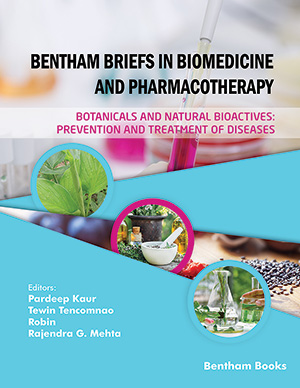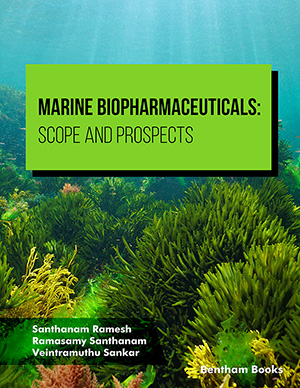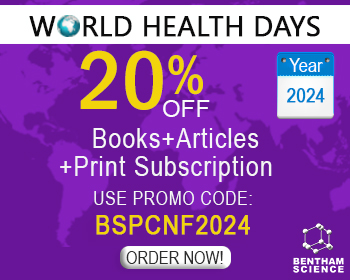Abstract
The importance of organometallics can be noticed by their presence in all life organisms. The most known natural organometallic molecule is vitamin B12, a porphyrin containing a cobalt atom, useful for several enzymatic transformations. Based on the remarkable properties of this class of compounds, a new area of medicinal research was developed. Gerard Jaouen was the first to introduce the term of “bioorganometallic chemistry” in 1985 although the first organometallic therapeutical was Salvarsan®, discovered by Paul Ehrlich (Nobel Prize in Medicine in 1908). Bioorganometallic chemistry consists of the synthesis and the study of organometallic complexes, complexes with at least one metal-carbon bond, in a biological and medicinal interest. This field of research was accentuated by the discovery of the ferrocene in 1951 by Pauson and Kealy, confirmed in 1952 by Wilkinson (Nobel Prize in 1973). Today, bioorganometallic chemistry includes 5 main domains: (1) organometallic therapeuticals, (2) toxicology and environment, (3) molecular recognition in aqueous phases, (4) enzymes, proteins and peptides, (5) bioanalysis and pharmaceutical sensors. In this review, we focused on organometallic therapeuticals. The exceptional properties of organometallics are first described and then, an overview on the main organometallic complexes used for drug design is presented. This review gives an idea how organometallics can be used for the rational design of new drugs.
Keywords: Bioorganometallic chemistry, chemotherapy, organometallic complexes, metallocenes
Current Medicinal Chemistry
Title: Organometallic Complexes: New Tools for Chemotherapy
Volume: 17 Issue: 25
Author(s): N. Chavain and C. Biot
Affiliation:
Keywords: Bioorganometallic chemistry, chemotherapy, organometallic complexes, metallocenes
Abstract: The importance of organometallics can be noticed by their presence in all life organisms. The most known natural organometallic molecule is vitamin B12, a porphyrin containing a cobalt atom, useful for several enzymatic transformations. Based on the remarkable properties of this class of compounds, a new area of medicinal research was developed. Gerard Jaouen was the first to introduce the term of “bioorganometallic chemistry” in 1985 although the first organometallic therapeutical was Salvarsan®, discovered by Paul Ehrlich (Nobel Prize in Medicine in 1908). Bioorganometallic chemistry consists of the synthesis and the study of organometallic complexes, complexes with at least one metal-carbon bond, in a biological and medicinal interest. This field of research was accentuated by the discovery of the ferrocene in 1951 by Pauson and Kealy, confirmed in 1952 by Wilkinson (Nobel Prize in 1973). Today, bioorganometallic chemistry includes 5 main domains: (1) organometallic therapeuticals, (2) toxicology and environment, (3) molecular recognition in aqueous phases, (4) enzymes, proteins and peptides, (5) bioanalysis and pharmaceutical sensors. In this review, we focused on organometallic therapeuticals. The exceptional properties of organometallics are first described and then, an overview on the main organometallic complexes used for drug design is presented. This review gives an idea how organometallics can be used for the rational design of new drugs.
Export Options
About this article
Cite this article as:
Chavain N. and Biot C., Organometallic Complexes: New Tools for Chemotherapy, Current Medicinal Chemistry 2010; 17 (25) . https://dx.doi.org/10.2174/092986710791859306
| DOI https://dx.doi.org/10.2174/092986710791859306 |
Print ISSN 0929-8673 |
| Publisher Name Bentham Science Publisher |
Online ISSN 1875-533X |
Call for Papers in Thematic Issues
Advances in Medicinal Chemistry: From Cancer to Chronic Diseases.
The broad spectrum of the issue will provide a comprehensive overview of emerging trends, novel therapeutic interventions, and translational insights that impact modern medicine. The primary focus will be diseases of global concern, including cancer, chronic pain, metabolic disorders, and autoimmune conditions, providing a broad overview of the advancements in ...read more
Cellular and Molecular Mechanisms of Non-Infectious Inflammatory Diseases: Focus on Clinical Implications
The Special Issue covers the results of the studies on cellular and molecular mechanisms of non-infectious inflammatory diseases, in particular, autoimmune rheumatic diseases, atherosclerotic cardiovascular disease and other age-related disorders such as type II diabetes, cancer, neurodegenerative disorders, etc. Review and research articles as well as methodology papers that summarize ...read more
Chalcogen-modified nucleic acid analogues
Chalcogen-modified nucleosides, nucleotides and oligonucleotides have been of great interest to scientific research for many years. The replacement of oxygen in the nucleobase, sugar or phosphate backbone by chalcogen atoms (sulfur, selenium, tellurium) gives these biomolecules unique properties resulting from their altered physical and chemical properties. The continuing interest in ...read more
Current advances in inherited cardiomyopathy
Describe in detail all novel advances in multimodality imaging related to inherited cardiomyopathy diagnosis and prognosis. Shed light to deeper phenotypic characterization. Acknowledge recent advances in genetics, genomics and precision medicineread more
 43
43
- Author Guidelines
- Graphical Abstracts
- Fabricating and Stating False Information
- Research Misconduct
- Post Publication Discussions and Corrections
- Publishing Ethics and Rectitude
- Increase Visibility of Your Article
- Archiving Policies
- Peer Review Workflow
- Order Your Article Before Print
- Promote Your Article
- Manuscript Transfer Facility
- Editorial Policies
- Allegations from Whistleblowers
- Announcements
Related Articles
-
Contemporary Progress in the Synthetic Strategies of Imidazole and its Biological Activities
Current Organic Synthesis Animal Models of Carcinogenesis in Inflamed Colorectum: Potential Use in Chemoprevention Study
Current Drug Targets Endothelial Endocytic Pathways: Gates for Vascular Drug Delivery
Current Vascular Pharmacology Gauging Reactive Metabolites in Drug-Induced Toxicity
Current Medicinal Chemistry Editorial (Hot Topic: Coming Back to Nature: Plants as a Vital Source of Pharmaceutically Important Metabolites – Part II A)
Current Medicinal Chemistry New Perspectives in the Pharmacological Treatment of Non-Melanoma Skin Cancer
Current Drug Targets Hypoxia Signaling and the Metastatic Phenotype
Current Molecular Medicine Synthesis and Biological Studies of New Multifunctional Curcumin Platforms for Anticancer Drug Delivery
Medicinal Chemistry MicroRNA Mediated Network and DNA Methylation in Colorectal Cancer
Protein & Peptide Letters New Immunosuppressants: Immunosuppression and Immunomodulation
Medicinal Chemistry Reviews - Online (Discontinued) Generation of a Chimeric Plasmin-resistant VEGF165/VEGF183 (132-158) Protein and its Comparative Activity
Protein & Peptide Letters A Mechanistic Overview on Male Infertility and Germ Cell Cancers
Current Pharmaceutical Design Circulating MicroRNAs as a New Class of Biomarkers of Physiological Reactions of the Organism to the Intake of Dietary Supplements and Drugs
MicroRNA Editorial [Hot Topic: New Approaches to Treating Cancer: Medicinal Chemistry and Therapeutic Potential (Guest Editor: David J. Weber)]
Current Topics in Medicinal Chemistry Antioxidant Effects of Natural Bioactive Compounds
Current Pharmaceutical Design Law-Medicine Interfacing: Patenting of Human Genes and Mutations
Recent Patents on DNA & Gene Sequences The Prognosis of Patients with Liver Metastases from Colorectal Cancer still Depends on Anatomical Presentation more than on Treatments
Current Cancer Drug Targets Id-1B, an Alternatively Spliced Isoform of the Inhibitor of Differentiation-1, Impairs Cancer Cell Malignancy Through Inhibition of Proliferation and Angiogenesis
Current Molecular Medicine Aromatase, Estrogens and Testicular Germ Cell Development
Immunology, Endocrine & Metabolic Agents in Medicinal Chemistry (Discontinued) Gas1 is a Pleiotropic Regulator of Cellular Functions: from Embryonic Development to Molecular Actions in Cancer Gene Therapy
Mini-Reviews in Medicinal Chemistry























